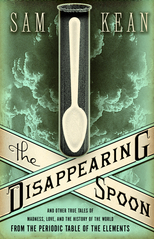- HOME
- INTRO TO THE FORUM
- USE AND MISUSE
- BADLY WRITTEN, BADLY SPOKEN
- GETTING
TO KNOW ENGLISH - PREPARING FOR ENGLISH PROFICIENCY TESTS
- GOING DEEPER INTO ENGLISH
- YOU ASKED ME THIS QUESTION
- EDUCATION AND TEACHING FORUM
- ADVICE AND DISSENT
- MY MEDIA ENGLISH WATCH
- STUDENTS' SOUNDING BOARD
- LANGUAGE HUMOR AT ITS FINEST
- THE LOUNGE
- NOTABLE WORKS BY OUR VERY OWN
- ESSAYS BY JOSE CARILLO
- Getting A Better Handle On When To Use Or To Just Knock Off “That”
- How To Avoid Semantic Bedlam In The Usage Of The Word “Only”
- Why Is The Sentence “It Can Be Overcame” Grammatically Wrong?
- How Finite Verbs Differ From Non-Finite Verbs
- The Need To Avoid Officious Stock Phrases When Writing Or Speaking
- Sounding Profound By Quoting Someone Without Attribution
- ABOUT JOSE CARILLO
- READINGS ABOUT LANGUAGE
- TIME OUT FROM ENGLISH GRAMMAR
- NEWS AND COMMENTARY
- BOOKSHOP
- ARCHIVES
TIME OUT FROM ENGLISH GRAMMAR
This section features wide-ranging, thought-provoking articles in English on any subject under the sun. Its objective is to present new, mind-changing ideas as well as to show to serious students of English how the various tools of the language can be felicitously harnessed to report a momentous or life-changing finding or event, to espouse or oppose an idea, or to express a deeply felt view about the world around us.
The outstanding English-language expositions to be featured here will mostly be presented through links to the websites that carry them. To put a particular work in better context, links to critiques, biographical sketches, and various other material about the author and his or her works will usually be also provided.
I hope you’ll enjoy the new selections that will be presented here.Joe Carillo
A fascinating book to help you get rid of your science phobia
If you have a phobia for science, reading Sam Kean’s The Disappearing Spoon: And Other True Tales of Madness, Love and the History of the World From the Periodic Table of Elements (Little, Brown & Company, 391 pages) just might be one good way to get rid of it—assuming, of course, that you are mesmerized into reading it rather than being altogether turned off by its kilometric subtitle.

The Disappearing Spoon weaves fascinating tales and astounding details about the scientists whose discoveries and researches led to the creation of the Periodic Table of the Elements, which is considered one of mankind’s crowning scientific achievements. As Janet Maslin says in her review of the book in the Books of the Times section of the August 4, 2010 issue of The New York Times, The Disappearing Spoon is “a work of chatty popular science that means to rekindle affection for the table and its many mysteries.”
Maslin explains what the author seeks to achieve: “Though he is obviously quite knowledgeable about chemistry, Mr. Kean knows that ‘probably the biggest frustration for many students was that the people who got the periodic table, who could really unpack how it worked, could pull so many facts from it with such dweeby nonchalance.’ Mr. Kean’s book means to override that frustration by making some of those facts available to anyone.”
According to Maslin, the book is so eager to present the periodic table as “slangily, irreverently and colorfully as possible” that it refers to, say, the element mercury in its loose form as “supple spheres,” a “silver lentil,” “futuristic metal” and “a pecan-sized glob.” And Maslin says that Mr. Kean “makes the excellent point that he learned about history, etymology, alchemy, mythology, literature, poison forensics and psychology all by studying extensive mercury lore. But such a “sprawling and scattershot” treatment of the book’s subject, Maslin adds, makes The Disappearing Spoon “a nonstop parade of lively science stories” rather than a lucid exposition that could “really unpack how the periodic table works” for the lay reader.
The Disappearing Spoon, Maslin says, is a timely conversation piece with the bustling atmosphere it creates with its storytelling. “Just don’t expect to understand cold fusion when Mr. Kean’s ebullient tale telling is over,” she adds.
Read Janet Maslin’s “Hard Science, Softened With Stories” in Books of the Times now!
ABOUT THE AUTHOR:
Sam Kean says he spent years collecting mercury from broken thermometers as a kid. Now a writer in Washington, D.C., Kean has contributed works to The New York Times Magazine, Mental Floss, Slate, The Believer, Air & Space, Science, and The New Scientist. He is currently working as a reporter at Science magazine and as a 2009 Middlebury Environmental Journalism fellow. In 2009, he was a runner-up for the National Association of Science Writers’ Award for best young science writer.
RELATED READING:
In his book Quantum Leaps (Belknap Press of Harvard University Press, 240 pages), Jeremy Bernstein, a visiting physics professor at Princeton University and a prolific science writer, explores the depiction of quantum physics in literature in both literal and metaphorical terms. At its core, the book takes an intimate look at the work of the Irish physicist John Bell (1928-90), who is thought to have solved the problem with the astounding theory that one particle can seem to “know” what has happened to another thousands of miles away.

Read Peter Forbes’ review of Quantum Leaps in the Independent.co.uk now!
Read an excerpt of Jeremy Bernstein’s Quantum Leaps in GoogleBooks






